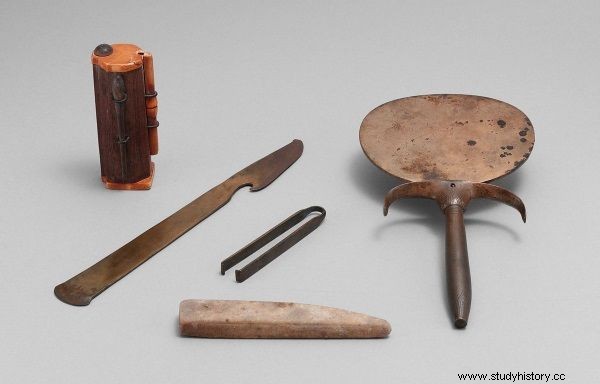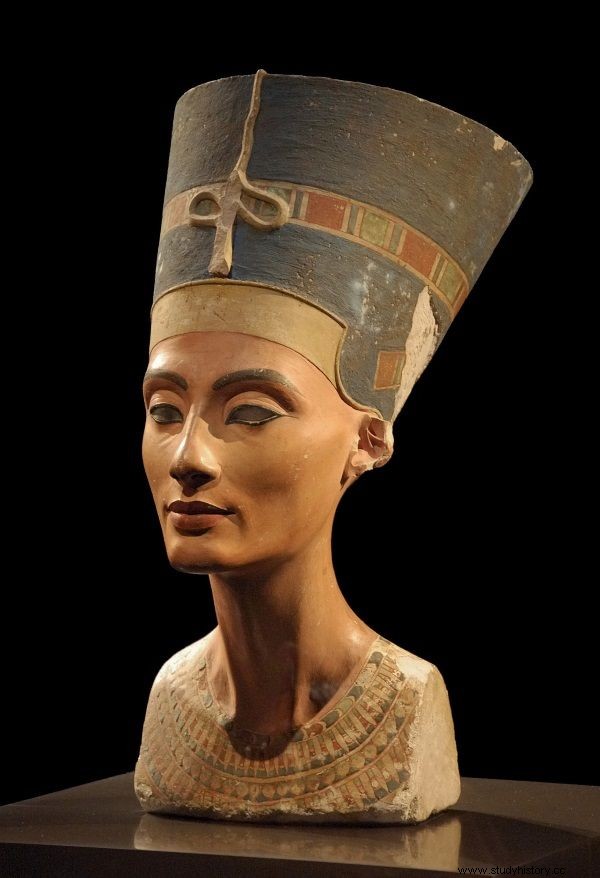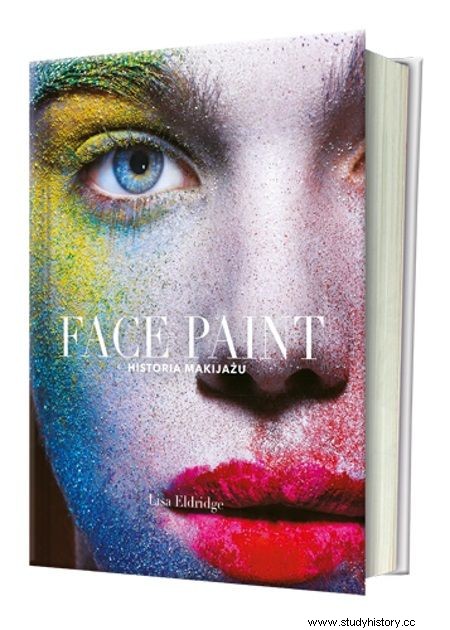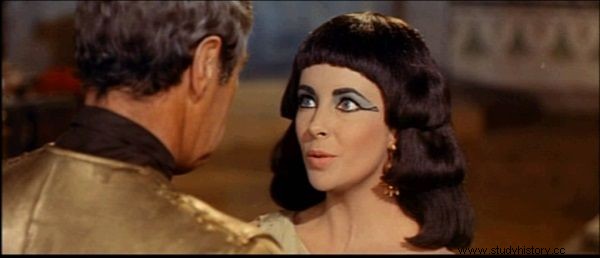Even representatives of the oldest civilizations felt the need to decorate their faces and bodies. The ancient Egyptians also did not deny themselves the opportunity to improve their beauty. Their make-up had not only an aesthetic but also ... magical meaning. Many of the subjects of the pharaohs therefore had a "magic look", and quite literally.
Thousands of years before the pyramids were built and before the invention of modern mascara, men, women and children of all classes of Egyptian society applied makeup. Moreover, they were absolutely convinced that even death did not absolve from the obligation to paint.
Believing deeply that the afterlife is not very different from the temporal and that similar items are needed in it, the subjects of the pharaohs on their last journey took cosmetics and make-up accessories that archaeologists find in their tombs. As Ana Ruiz writes in the book "The Spirit of Ancient Egypt", for example, slate palettes for rubbing cosmetics, which date back to 3300 BC, were unearthed in them.
Lisa Eldrige in the new book "Facepaint. Make-up history ” highlights the variety of makeup products and accessories at the time:
The Egyptians were skilled chemists who loved makeup and blends into cosmetics such as moisturizing creams, kohls, lip and cheek blushes, and even nail polish. They spread a powder derived from natural substances - ground nuts or minerals - on a pallet, plate or spoon and combined it with animal or vegetable fat to give the mixture the right structure […].

Ancient Egyptian makeup kit. (Metropolitan Museum of Art)
The consistency obtained in this way was to help the cosmetics stay on the skin as long as possible, which was not easy under the scorching African sun. Keeping the makeup in decent condition was quite important as it served many purposes.
It was regarded as an ornament, but also carried a magical and religious meaning. The most important and visible element of Egyptian makeup was eye care.
Eyes
As Lisa Eldrige points out in the pages of “Facepaint. The history of makeup ” , most characters in the art of the era have clearly, strongly emphasized eyes and eyebrows. This is clearly visible, for example, in the frescoes in the Valley of the Kings.
The characteristic eye makeup has penetrated into pop culture after many millennia. It is worn by Cleopatra with the face of Liz Taylor in the monumental film from 1963 and the one from the film about the adventures of Asterix and Obelix and Nefertiti from the famous bust. It was the appearance of Liz Taylor in "Cleopatra" that inspired the crazy fashion for "Egyptian makeup" in the sixties. How was this strong line created?
It was drawn with a kohl, which has survived as a cosmetic until our times. The one used by the ancient Egyptians was a complex blend of many ingredients. Among them, the most important were:powdered metal (antimony), roasted almonds, lead, oxidized copper, ocher, ash, malachite, chrysocolla.
All these mysteriously sounding mixed substances were stored in special vessels. Before use, they were moistened with water or oil, and then applied with a special applicator.

Bustie Nefretete (photo:Philip Pikart, license CC BY-SA 3.0)
As we can read in Margaret Bunson's Ancient Egyptian Encyclopedia, a great deal of attention was paid to painting this part of the face. It was also due to religious premises - attempts were made to recreate the eye of Ra, which is a protective talisman, or the eye of Horus. Makeup in a shade of malachite ensured connection with the goddess Hathor, known as the "Lady of Malachite".
As Aleksandra Hallmann-Mikołajczyk writes in an article devoted to makeup in the land of the pharaohs, Egyptian women tried to give their eyes an almond shape. They did it by applying lipstick around the lash line and extending the corner all the way to the eyebrows. The eyebrows were also strongly marked and extended according to the natural direction of the line. Similar makeup was done by both men and women.
Interestingly, although the image of the Egyptian black line has become established in pop culture, the eyes were also painted green. This is confirmed by archaeological finds - both types of cosmetics (black and green) appear in the tombs
Lips
Excavations in Egypt prove that the career of red lipstick extends well beyond the 20th century. A few thousand years ago, lips were dyed this color. Researchers found a capillary that probably contains lipstick. When it was carefully examined, it turned out that one third of it consists of a red dye - ocher. The other ingredients include resin and fat.

Scientists speculate that the texture of the lipstick of that time resembled today's and was applied with a brush or spatula. Hallman-Mikołajczyk also informs that a woman painting her lips with a brush was immortalized in an erotic Egyptian papyrus.
Face
The women of the royal family and those of the upper classes defended their faces against the sun as much as they could. They also ensured good hydration, as evidenced by the preserved recipes of creams. Despite the scorching sun, the Egyptian women tried to keep their skin as light as possible, and if necessary, they were ready to help nature by artificially brightening it. This was reflected in the tomb paintings, where they were depicted with an almost white complexion.
A pale face was a sign of noble origin - it proved that a woman could afford not to work physically and stay out of the sun for too long.
The Egyptians did not put a thick layer of powder on the face, but, as the paintings from the era show, they were able to use it. The relief, currently in the British Museum in London, shows a woman who applies powder with a special applicator - in her hand she holds a characteristic powder puff. The faces of the Pharaohs' subjects could not fail to blush the cheeks.

Liz Taylor as Cleopatra in the 1963 movie.
Aleksandra Hallmann-Mikołajczyk states that this cosmetic, made of ocher, was found in tombs along with rubbing palettes. When you look at the famous bust of Nefertiti, it turns out that her face was painted in a way resembling a brush of pink. You can even get the impression that the ancient Egyptians invented face contouring.
Nails
Also, painting nails is by no means a modern invention. Tile staining was popular in Egypt. Varnishes as we understand it today did not yet exist. The nails were mainly stained with henna, which gave a yellow or orange shade.
As emphasized by Lisa Eldridge on the pages "Facepaint. The history of makeup ” , the colored manicure was a sign of high status, and the dark one was reserved for dynasties and courtiers. It is said that Cleopatra liked rusty red nails and Nefertiti liked ruby red.
Sources:
- Bunson M., Encyclopedia of Ancient Egypt , Infobase Publishing 2014.
- Eldridge L., Face Paint. Make-up history , Znak Horyzont, Krakow 2017.
- Hallmann-Mikołajczyk A., Ancient Egyptian make-up, "Quarterly of the history of material culture", 2006, no. 1.
- Ruiz A., The spirit from Ancient Egypt , Algora Publishing 2001.
